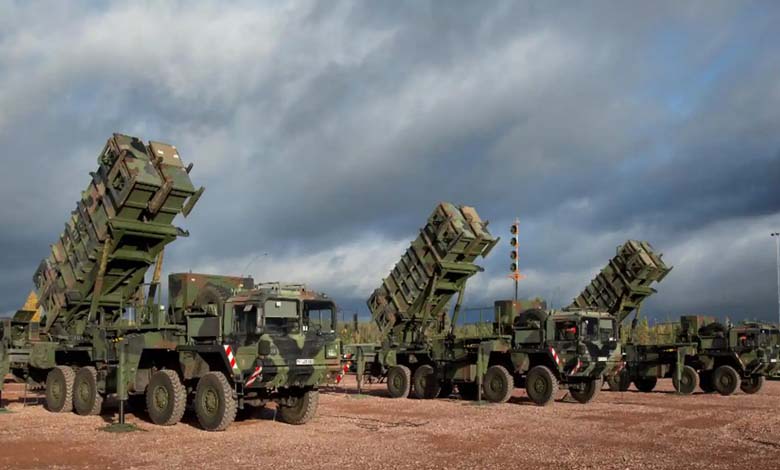What Are Patriot Missiles—and What Do They Mean for Ukraine?

Advanced defense systems are more than just military support—they send strategic signals that transcend firepower. This holds true for the Patriot missile systems.
-
20,000 drones in six months: Drone factories fueling the war in Ukraine
-
Quantity and Precision: Missile Superiority Gives Russia the Edge Over Ukraine
Former U.S. President Donald Trump recently announced that Ukraine would receive Patriot missile systems as part of a new military aid package, a decision warmly welcomed by Kyiv, which continues to suffer from nightly Russian bombardments.
In recent weeks, President Volodymyr Zelensky had repeatedly requested Patriots as Russia intensified its use of drones and missiles.
However, Trump’s announcement lacked details: the number of missiles, their source, and the timeline remain unclear.
-
War Consumes the Reserves: Ukraine Lures Gen Z with Cash and Perks
-
Russia and Ukraine Between Fire and Negotiation: Missiles in the Sky and Exchanges on the Ground
What is the Patriot Missile System?
The Patriot is the U.S. Army’s primary missile defense system, its name standing for “Phased Array Tracking Radar to Intercept On Target.”
The system proved its effectiveness last month when it helped intercept 13 out of 14 Iranian missiles fired at the U.S. Al-Udeid airbase in Qatar, according to CNN.
Capabilities
The latest Patriot interceptor variants are capable of:
- Intercepting short-range ballistic missiles
- Shooting down cruise missiles
- Neutralizing drones flying at altitudes up to 15 km and ranges up to 35 km
-
Ukraine War: Kyiv Hints at Concessions in a Plan Full of Obstacles
-
Land for Temporary Peace: Will Ukraine Be Forced into a Painful Solution?
Why Ukraine Needs It
A single battery can cover 100 to 200 square kilometers, depending on terrain and launchers. That’s a small portion of Ukraine’s 603,000 square kilometers.
As such, CNN notes that Ukraine needs multiple additional batteries.
What’s in a Patriot Battery?
A battery includes 6 to 8 missile launchers, each holding up to 16 interceptors, along with a phased-array radar, command center, and power station—all mounted on trucks and trailers.
Although 90 personnel operate a battery, just three soldiers can run it in combat mode, according to U.S. military reports.
-
Ukraine Settlement: Trump’s Plan Clashes with Kyiv’s Stubbornness and Moscow’s Missiles
-
Behind the Fronts: An Image Sparks a Symbolic War between Russia and Ukraine
High Costs
A full Patriot battery costs over $1 billion, while each interceptor alone costs around $4 million, making it economically inefficient to shoot down $50,000 drones, as Russia sends hundreds of drones daily in its latest attacks.
Accelerated Delivery
U.S. officials said Patriots could arrive sooner if transferred from NATO allies and replaced later with U.S.-purchased systems.
Trump claimed that some or all of the 17 batteries ordered by other countries could reach Ukraine very quickly, according to Reuters.
The Military Balance 2025 report from the IISS shows that six NATO countries—Germany, Greece, the Netherlands, Poland, Romania, and Spain—currently possess Patriot systems.
-
197 Mutual Threats: Drone Swarms over Russia and Ukraine
-
Appointment of a New Chief of Staff: Ukraine’s Attempt to Regain Military Momentum
No Silver Bullet
NATO Secretary-General Mark Rutte said on Monday that countries like Germany, Finland, Denmark, Sweden, and Norway could contribute equipment, though he didn’t confirm Patriot deliveries.
There are concerns that U.S. stockpiles of Patriots are already strained.
According to Kyiv, ten additional Patriot batteries are needed to protect the country from escalating missile and drone strikes.
Six batteries are already in use: two from the U.S., two from Germany, one from Romania, and a joint German-Dutch unit, according to the UK-based NGO Action on Armed Violence.
-
Secret Document Reveals… What Does Russia Want from Ukraine?
-
Ukraine after the Suspension of U.S. Aid: Implications and Options
Limited Impact
Experts warn that Patriot systems alone won’t end the war.
Retired U.S. General Wesley Clark, former NATO Supreme Allied Commander, told CNN: “If you really want to stop this, you need to strike Russia directly. You have to hit the archer—not just intercept the arrows.”












